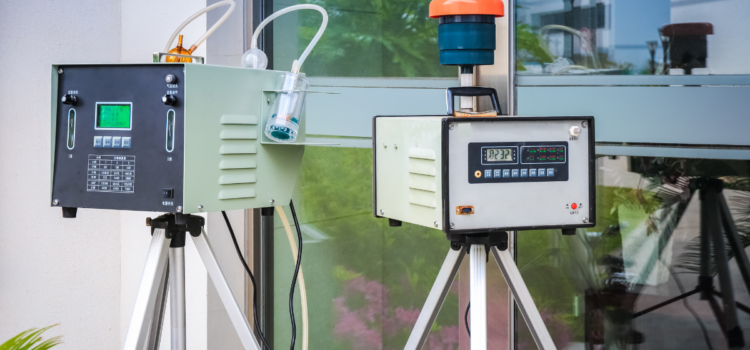
The city of Delano held its third air monitoring meeting to expand the air monitoring network within the city and identify local sources of pollution. The city’s plan is to implement mitigation plans and preventive measures to help reduce air pollution in the community.
The AB 617 program is a state-wide funded program that looks to work alongside communities to start a local steering committee. The program focuses on two things: the development of a local community air monitoring network to look at local data and to develop and implement a local Community Emissions Reduction Program (CERP).
“This CERP is designed to be used as a blueprint to lower local pollution. Our project is to support Delano residents to get ahead of the game and start the preliminary work to bring AB 617 benefits to Delano,” said Gustavo Aguirre, Climate and Environmental Justice Associate Director at the Central California Asthma Collaborative (CCAC).
Some resources that are available to improve air quality in Delano are more air monitoring.
Educational workshops and community meetings provide resources such as incentive programs
and information that will help inform residents about these resources that are available.
“The air monitors work by measuring particulate matter size. When the air flows through the two
sensors the monitors capture the PM2.5 reading. Then take those readings and analyze the
data and present it to the community. This comparative data can represent hourly, monthly,
summer, and winter data, etc,” said Sammie Meneses, climate and environmental justice associate.
PM2.5 is a fine particulate matter that is so fine it is invisible to the human eye. Some
health effects are respiratory issues such as asthma attacks, heart and lung cancer, premature
death, frequent emergency visits, and chronic or acute bronchitis. These are just a few
examples of health effects that are associated with exposure to PM2.5.
San Joaquin Valley Air, the community air monitoring network, is beneficial to the community because it brings high-quality local air pollution data.
“It brings in data that the government for decades has failed to do. Regardless of all the local sources of pollution, government regulators have not yet installed local air monitors to showcase Delano air quality and not downtown Bakersfield air quality,” said Aguirre. “The benefit comes from the BAM- an air monitor in the network that is of regulatory grade or the same as local governments have used. The BAM is supported by a network of low-cost air sensors that help support and ground truth the BAM and even give neighborhood-level air quality data.”
Meneses said that there are a couple of local sources of air pollution that are contributing to poor air quality. However, further analysis and investigation would be needed to know what toxins are contributing to the poor quality and know specifically where the pollution originated.
“One example of a strategy that can be implemented to mitigate local air pollution concerns is
potentially more air monitoring and education,” said Menese. “Getting feedback from the community and using other models from other communities can be a start to mitigate local air pollution concerns in Delano. This is a continuous process and doesn’t stop after these strategies are implemented, it is adapting accordingly as time goes on to ensure the best mitigation practices.”
The air pollution monitors located at the schools in Delano help with becoming an early warning
system for children with respiratory issues. Providing education to students about where the
monitors are placed, how they work, and how air pollution affects them can in turn have them
become future advocates and leaders to help reduce climate change.
“Using SJVAir.com provides real-time air quality data alerts to help children in school remain
inside if the air quality is bad. Also, providing information such as infographics and summary
sheets to send with kids back to their parents to help provide what they need to protect
themselves and their families,” said Meneses.
Aguirre said these resources could be used by students to look at trends in the local air
quality such as when air pollution goes up and down and look for reasons to why and get
students engaged in local air quality and air quality data.
“Some monitors that are going to be installed are going to be expanding in other school districts
that may have gaps with air monitoring and areas that the community identifies as possibly
having local sources of pollution,” said Meneses.